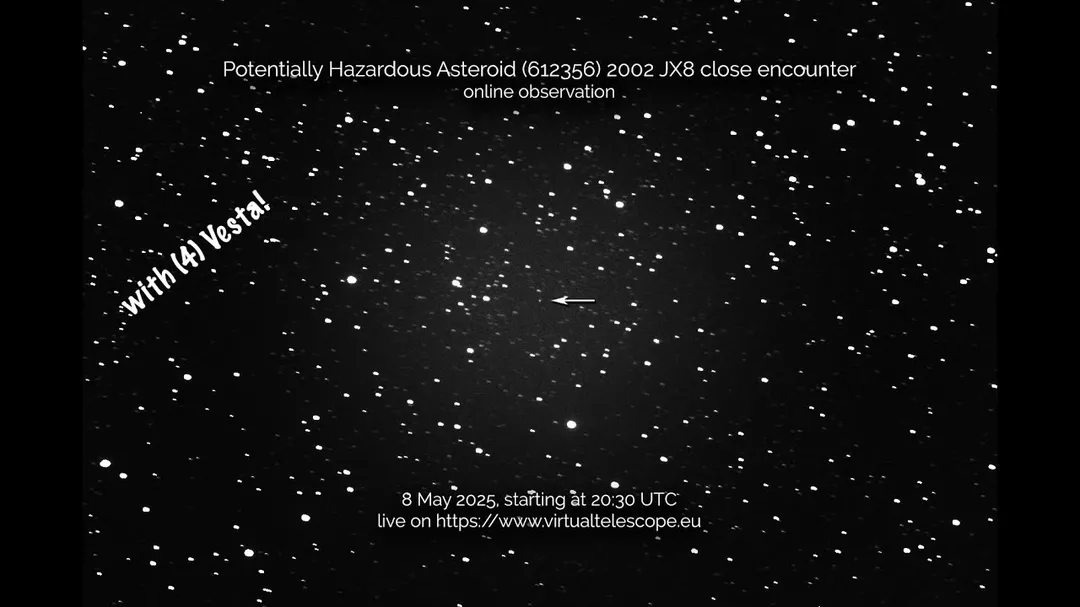
Stadium-Sized Asteroid 2002 JX8 Flies Past Earth: Watch the Livestream!
A stadium-sized asteroid, designated 2002 JX8, made a close approach to Earth on May 9, 2025. This event, while posing no immediate threat, offered a fascinating opportunity for astronomers and space enthusiasts to observe a potentially hazardous asteroid (PHA) in real-time. The Virtual Telescope Project provided a livestream, allowing viewers worldwide to witness the flyby.

Asteroid 2002 JX8, estimated at 950 feet (290 meters) in diameter, passed Earth at a distance of 4.2 million kilometers (2.6 million miles), roughly 10.9 times the average lunar distance. While this may seem far, its size and proximity classify it as a PHA, objects that NASA actively monitors due to their potential impact risk.
The Virtual Telescope Project, led by Gianluca Masi, successfully captured images of 2002 JX8 leading up to the flyby. Masi highlighted in a blog post that the asteroid, while approaching, would safely be millions of kilometers away. These observations allowed astronomers to track its trajectory and refine predictions about future approaches.
Why is this important? Although a collision is highly unlikely in the foreseeable future, studying PHAs like 2002 JX8 helps scientists better understand the population of near-Earth objects (NEOs) and develop strategies for planetary defense. NASA estimates that an asteroid of this size impacts Earth only once every 20,000 years. However continuously improving our knowledge and technology, means we will have a much better chance of avoiding potential future catastrophes.

Beyond 2002 JX8, NASA's Center for Near-Earth Object Studies (CNEOS) is also tracking other NEOs, including asteroid 424482 (2008 DG5), an Apolla asteroid, which will make a close pass on June 5, 2025. This one is the size of the Golden Gate Bridge!
The recent close approach of 2002 JX8 serves as a reminder of the dynamic nature of our solar system and the importance of continued vigilance. While this particular flyby was a safe one, it underscores the need for ongoing research and monitoring efforts to protect our planet from potential future impacts.
Did you catch the livestream? What are your thoughts on planetary defense? Share your comments below!